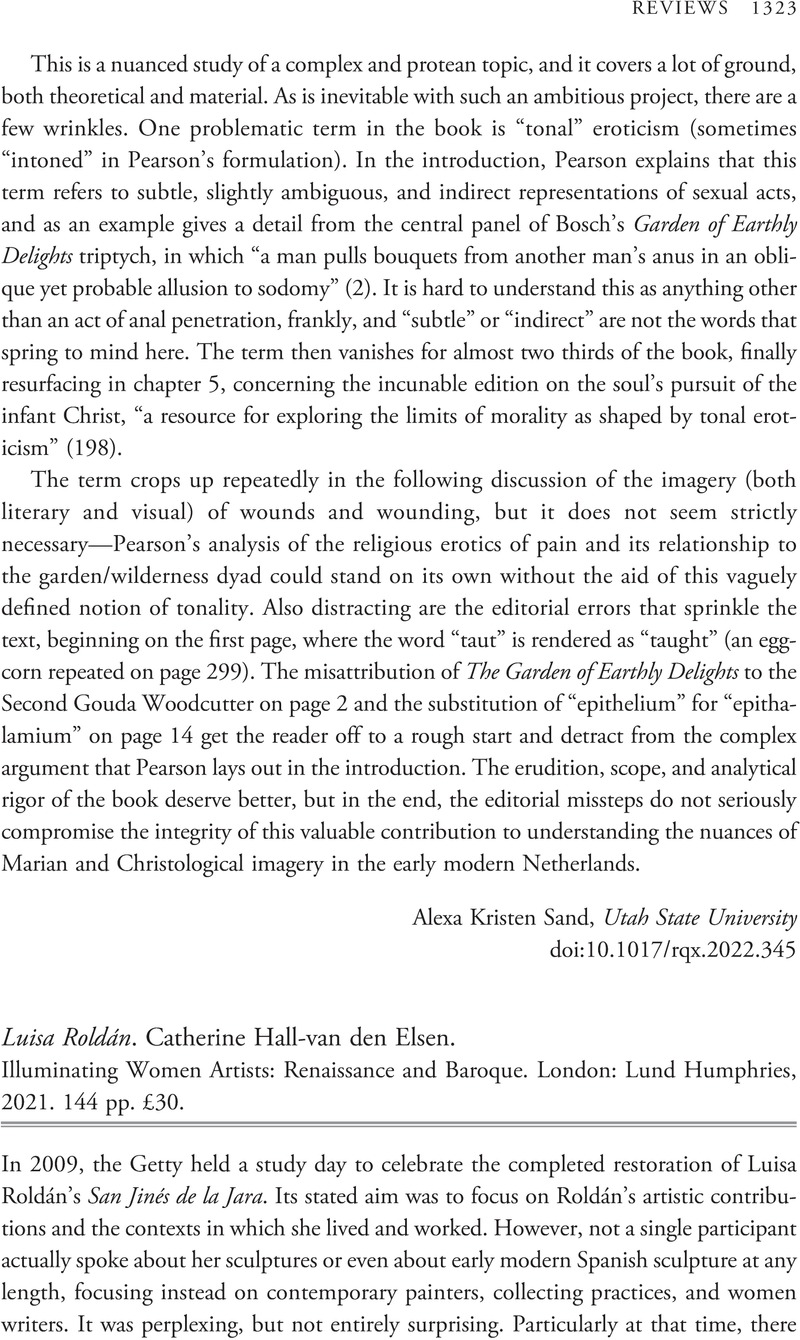No CrossRef data available.
Article contents
Luisa Roldán. Catherine Hall-van den Elsen. Illuminating Women Artists: Renaissance and Baroque. London: Lund Humphries, 2021. 144 pp. £30.
Review products
Luisa Roldán. Catherine Hall-van den Elsen. Illuminating Women Artists: Renaissance and Baroque. London: Lund Humphries, 2021. 144 pp. £30.
Published online by Cambridge University Press: 09 January 2023
Abstract
An abstract is not available for this content so a preview has been provided. Please use the Get access link above for information on how to access this content.

- Type
- Review
- Information
- Copyright
- Copyright © The Author(s), 2022. Published by the Renaissance Society of America



